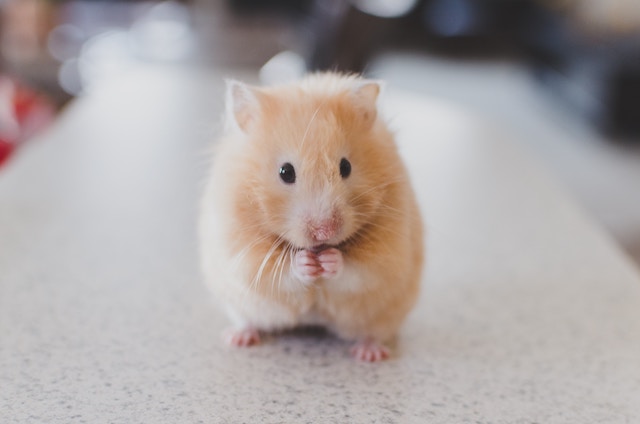Hamsters are natural omnivores, so it’s essential to know what foods can provide a balanced diet. Can hamsters consume green beans? Yes, hamsters can eat green beans as it is a rich source of protein, vitamins, and minerals.
Green beans are an excellent addition to your hamster’s diet and should be in small portions with other vegetables, fruits, and seeds. Overfeeding can cause digestive issues resulting in diarrhea or severe bloating.
Incorporating variations in their diet can reduce the chances of hamsters being picky eaters while also providing nutritional variety.
Some suggestions include introducing raw green beans to your hamster’s diet, and gradually adding new foods to prevent sudden changes or upset stomachs. Making sure that they have constant access to water is recommended.
Overall, introducing greens such as green beans into your hamster’s diet is a great idea but must be done so with moderation. It is essential to observe any adverse reactions after introducing a new food item in the diet.
Green beans may not be as valuable as gold, but for a hamster’s diet, they’re definitely worth their weight in nutrients.
Nutritional Value of Green Beans for Hamsters
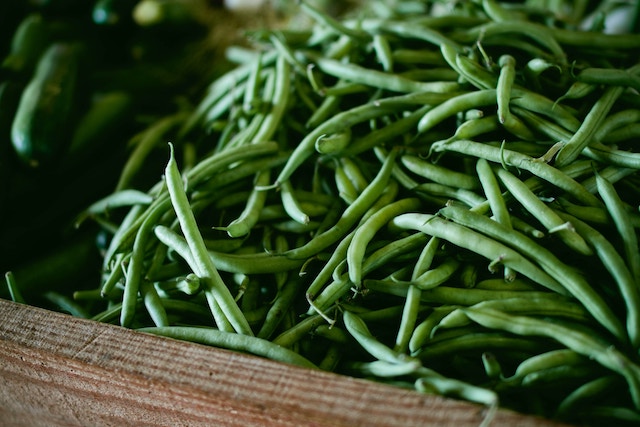
Green beans are a nutritious vegetable that can make a healthy addition to your hamster’s diet. Being low in fat and high in fiber, green beans offer several benefits to your furry friend.
- Green beans are rich in Vitamin C, which helps boost the immune system of your hamster.
- They contain Vitamin A, which is beneficial for vision and skin health.
- The high fiber content in green beans helps regulate bowel movements and prevent constipation.
- They also contain antioxidants that can help prevent cell damage and contribute to the overall well-being of the animal.
It is essential to ensure that you feed your hamster green beans in moderation, as overfeeding can lead to digestive concerns. Giving small-sized slices of green beans once or twice weekly, along with a balanced diet and freshwater provides health benefits.
Feeding your hamster fruits and vegetables may be an excellent way to keep them happy and healthy. However, it would be best not to rely solely on these foods to fulfill their dietary needs.
Carefully evaluating what you feed your hamster will help keep them satisfied while also allowing them to maintain optimal health. Ensure the provision of suitable food items to avoid putting yourself at risk by overlooking their nutritional demands.
Before feeding any new food item, consult with a pet nutritionist or vet specializing in exotic animals.
Feeding green beans to your hamster may not make them grow a third tail, but it’ll certainly add some extra crunch to their diet.
Benefits of Feeding Green Beans to Hamsters
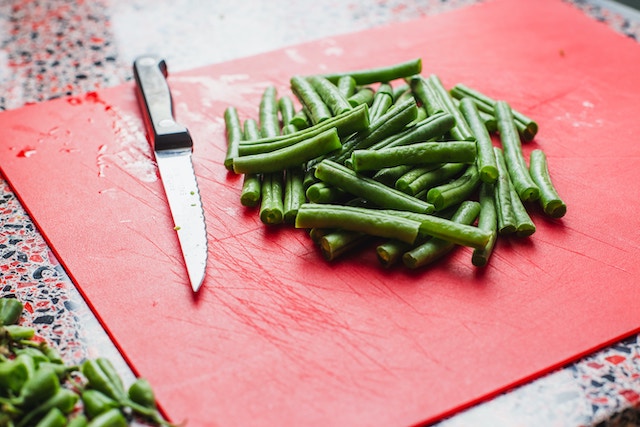
To maximize your hamster’s health, consider feeding them green beans. With its host of benefits, including better digestion, rich vitamins and minerals, and aiding in controlling obesity, green beans have much to offer.
Good for Digestion
The ingestion of Green Beans by Hamsters can positively impact their digestive systems. Here are five points that support this thesis statement:
- Green beans have high amounts of fiber, which can aid in the digestion process and help prevent constipation.
- This veggie is low calorie and rich in vitamins A & C. It makes it quite easier for hamsters to maintain a healthy weight while simultaneously getting all necessary nutrients without causing bowel problems or indigestion.
- Including green beans in a hamster’s regular diet promotes the growth and development of beneficial gut bacteria. It keeps the colon wall in optimal shape, helping with digestion-related problems.
- The hamster’s digestive system will benefit from maintaining moisture levels within the intestinal tract. Green beans contain a high water concentration that provides hydration to keep things moving along.
- As previously noted, excess fat & calories can cause major digestion issues in hamsters. With green beans being low-fat and calorie-dense, it helps regulate blood sugar levels and metabolism.
Additionally, it’s essential to mention that overindulging in even healthy foods is never advised, especially if it contradicts their balanced dietary regimen.
One such instance includes my friend who started feeding her Syrian hamster small bits of green beans alongside her regular protein diet two times each week – she reported noticing improved bowel movements and less gas formation—her veterinarian verified the same during routine check-ups.
Feeding your hamster green beans is like giving them a multivitamin with a side of crunch.
Rich in Vitamins and Minerals
Feeding Hamsters with Green Beans
Green beans, the often underutilized legume, are a great source of essential vitamins and minerals for hamsters. By incorporating green beans into your hamster’s diet, you can positively impact their well-being in multiple ways.
- Green beans contain significant levels of Vitamin C, which helps improve metabolic processes.
- It is also an excellent source of Vitamin K which plays a vital role in regulating blood clotting.
- The high quantity of fiber in green beans helps improve gastrointestinal functions.
- Its rich magnesium content supports strong and healthy bones.
- The nutritional density of green beans helps enhance hamsters’ immune systems.
- Important antioxidants like lutein and beta-carotene found in green beans boost overall health.
Feeding your furry pets with this legume may provide additional benefits, such as preventing digestive problems. However, always consult a veterinarian before introducing any new food to your pet’s diet.
Recent research shows that feeding green beans to hamsters aids in reducing the risk of cancer through its antioxidant properties.
Incorporating green beans into your hamster’s meals can be simple and delicious. Remember to cook the fresh produce thoroughly or offer it raw. Either way, your fluffy friend will benefit from these tasty veggies!
Give your hamster a green bean a day; keeps obesity at bay.
Helps Control Obesity
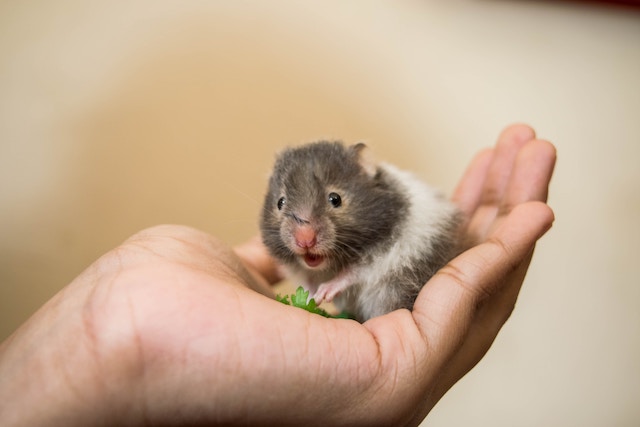
Green beans can prevent obesity in hamsters due to their low-calorie content and high-fiber content. Fiber helps regulate digestion by keeping the stomach feeling full while reducing the amount of calories consumed. Additionally, green beans also contain essential nutrients for hamsters, such as vitamins C and K, which support their immune system and overall health.
Moreover, feeding green beans occasionally helps maintain a healthy diet for our furry friends. It is ideal to provide hamsters with fresh vegetables alongside their food pellets, which are often calorie-rich. However, it’s important to introduce new foods gradually, monitoring any adverse reactions.
In summary, incorporating fresh vegetables into a hamster’s diet can provide essential nutrients and support overall health while potentially reducing obesity risk. One pet owner saw a significant change in her hamster’s coat texture and overall activity level after introducing green beans into his diet as a treat. Start slowly by adding small amounts of vegetables to your hamster’s diet, and watch them thrive!
The only risk of feeding green beans to hamsters is that they might become addicted and start demanding a side dish of mashed potatoes.
Risks of Feeding Green Beans to Hamsters
To prevent potential harm to your hamster, it’s important to understand the risks of feeding green beans. High in water content, protein, and fiber, green beans may seem like a healthy option; however, there are potential hazards to consider. In this section about the risks of feeding green beans to hamsters, we will discuss the dangers of feeding your pet high-water content foods, the risks of excessive protein and fiber intake, and finally, the potential choking hazard that green beans may pose.
High Water Content
Green beans contain a high percentage of water, making them a hydrating option for hamsters. However, overfeeding can lead to diarrhea, which puts the hamster’s health at risk. Additionally, excessive water intake can cause problems with their kidneys and urinary tract.
It is crucial to monitor the amount of green beans fed to hamsters and avoid feeding them in large portions. As always, moderation is key in furry friends’ nutrition.
Feeding green beans has been a recommended option for pet owners who want to offer a balanced diet to their hamsters. However, green beans should never replace their daily diet but serve as an occasional snack. A balanced hamster diet consists of fresh vegetables, grains, seeds, fruits, and occasional protein treats.
In 2018, a pet owner took his hamster to the veterinarian due to diarrhea caused by overfeeding green beans. This case highlights the importance of moderation when offering snacks that contain high water content, like green beans.
Looks like hamsters can now bulk up on protein and fiber… at the risk of being mistaken for a green bean themselves.
High in Protein and Fiber
Green beans may appear to be a healthy snack for hamsters. Still, they can pose potential risks due to their nutritional composition. Hamsters need a specific type and amount of nutrients in their diet, which can be disrupted by feeding them green beans.
- Rich in Protein and Fiber: Green beans are high in protein and fiber content, which may make them seem like an ideal dietary choice for hamsters.
- Digestive issues: As hamsters are herbivores, feeding them a substantial quantity of protein can lead to digestive problems such as diarrhea or bloating.
- Imbalance in Nutrients: Since green beans lack several essential vitamins and minerals needed by a hamster’s body, overfeeding it may cause an imbalance in the nutrient content.
- Toxicity risk: While most plants are safe for dogs and cats, some plants can be toxic to rodents, like hamsters. For example, if you feed kidney beans or immature navy beans to your pet, it can lead to severe toxicity.
- Cooked Green Beans: Compared to raw green beans, cooked ones might have the opposite effect. Cooked Green bean lacks fibers and may result in constipation among hamsters.
In addition, green beans’ hard fiber strands could cause obstructions in the hamster’s throat or cheek pouches if not appropriately chewed.
Pro Tip: Before introducing any new food into your pet’s diet routine, consult your veterinarian. Keep track of any unusual symptoms or reactions after providing green beans, as it will help better understand their suitability for your furry friend’s digestive system.
Looks like feeding green beans to your hamster might be a choking hazard… hope they know the Heimlich maneuver!
Potential Choking Hazard
Hamsters are prone to choking hazards, and feeding them green beans can pose a similar risk.
- Green beans are not easily digestible, causing blockages in the digestive tract.
- Their hard texture can also obstruct airflow and cause respiratory issues in hamsters.
- Even smaller green bean pieces can get lodged in their throat, leading to choking and potential death.
It’s important to note that other similar-sized vegetables also pose a choking hazard for hamsters. Therefore, it’s best to avoid feeding them any hard or fibrous foods that could potentially put their health at risk.
If you want to provide your hamster with various healthy vegetables, it’s best to stick to soft and easy-to-digest options such as carrots or lettuce. It’s always recommended to consult with a veterinarian before introducing new foods into your pet’s diet. By providing your hamster with the right nutrition and avoiding potential choking hazards, you can ensure they stay healthy and happy.
Because green beans are the gateway vegetable to a life of risky hamster feeding.
How to Safely Feed Green Beans to Hamsters
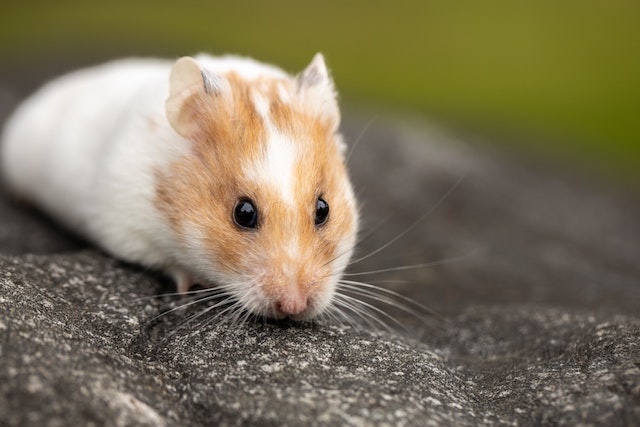
Preparing Green Beans for Hamsters
To safely prepare green beans for hamsters, follow these simple guidelines:
- Ensure the green beans are fresh and free from any harmful chemicals or pesticides.
- Cut them into small pieces to reduce choking hazards.
- Steam or boil them until they are soft and easy to chew.
It’s essential to note that only adding green beans alone can lead to malnutrition. Add other nutritious foods in combination to maintain a balanced diet for your furry friend.
Additionally, avoid feeding canned green beans as they contain high levels of sodium, which harms hamsters. It is good practice to serve fresh vegetables instead of canned ones.
When introducing new food items like green beans into your hamster’s diet, gradually change over time. Sudden changes in diet could result in digestive problems and upset stomachs.
By following these guidelines for preparing and introducing green beans into your hamster’s diet, you can ensure your pet stays healthy and happy.
Remember, it’s all fun and games until your hamster demands a super-sized serving of green beans.
Serving Size
When it comes to feeding your hamster with green beans, you must be careful about serving size. Although hamsters can eat vegetables, overfeeding can lead to digestive problems and other issues. The appropriate serving size of green beans for hamsters is 1-2 tablespoons per day.
To give you a better understanding, here’s a table that shows the serving size of green beans for different types of hamsters:
| Hamster Type | Serving Size |
|---|---|
| Dwarf | 1 tablespoon |
| Syrian | 2 tablespoons |
| Roborovski | 1 tablespoon |
It’s essential to remember that prolonged exposure to excess green beans could lead to diarrhea and stomach problems in your pet. Therefore, you should keep an eye on their food intake.
Additionally, ensure to serve organic fresh green beans instead of canned or frozen ones since additives used as preservatives may harm their health.
Pro Tip: Always introduce new foods gradually and in small amounts to monitor your furry friend’s reaction. Make sure they tolerate the new food before making it a regular part of their diet.
Feeding your hamster green beans is like giving them a healthy junk food option, minus the guilt and the extra pounds.
Recommendations for Feeding Green Beans to Hamsters
Green Beans Feeding Guidelines for Your Hamster
Green beans contain high nutritional content and can be a nutritious addition to your hamster’s diet. Here are some recommended tips for feeding green beans to your hamsters.
- Always use fresh green beans with no pesticides or chemicals.
- Cut the bean into small and manageable pieces, avoiding long strings that may tangle or get stuck.
- Feed moderate amounts of green beans to supplement their regular diet, as too much intake may cause digestive problems.
Hamsters Feeding Schedules
It is important to remember that a hamster’s primary food source should still come from its staple diet. Ensure you do not overindulge in feeding them green beans frequently or outside of their mealtime schedule.
Conclusion: Can Hamsters Eat Green Beans?
Hamsters can eat green beans but in moderation. These legumes are a great source of fiber, protein, and vitamins for hamsters. However, it is essential to provide fresh green beans and remove any heavy dressing or seasoning before offering them to your furry friend. Overfeeding green beans may lead to digestive problems, so be mindful of serving size. Remember to include other vegetables and protein sources in their diet.
In addition to being a healthy food choice, green beans also stimulate the natural instincts of your hamster by providing mental stimulation through playtime with these hearty vegetables. It is important to note that each hamster’s dietary needs will vary based on age, health status, and appetite.
To ensure your hamster stays healthy and satisfied with his/her diet, consult a veterinarian specializing in small animals. Also, remember to keep their living conditions clean and enriching.
Don’t miss out on the opportunity to bond with your pet through mealtimes and healthy food choices that contribute positively towards their physical and emotional well-being.
Read Next: Can Gerbils Eat Blueberries?

